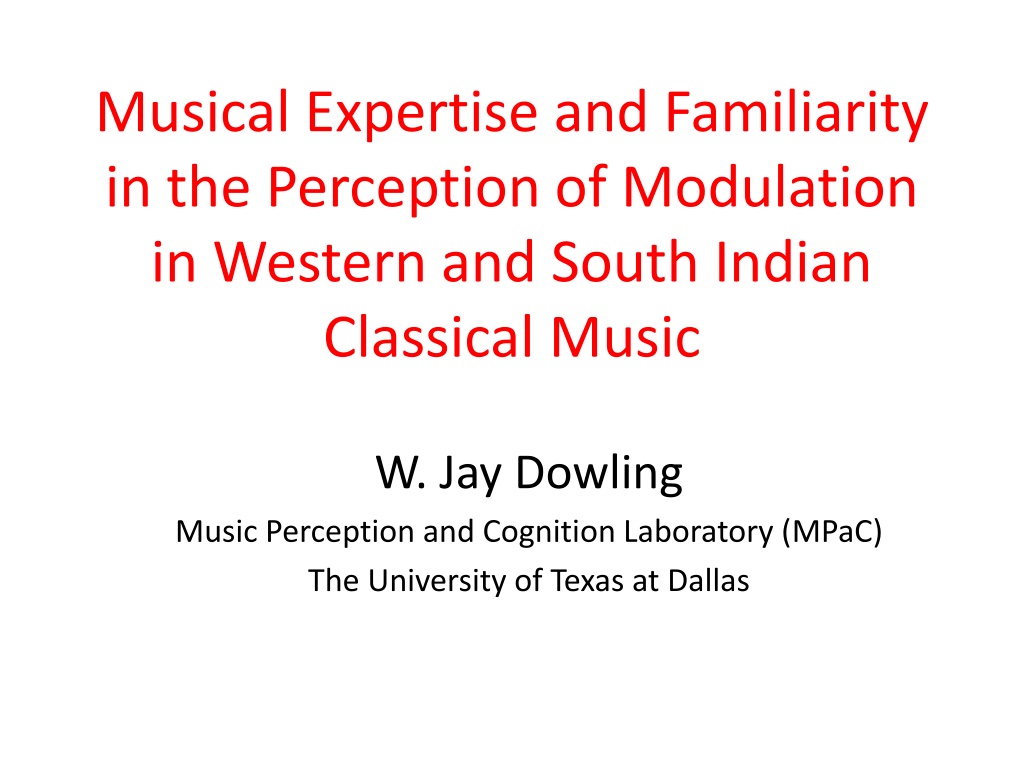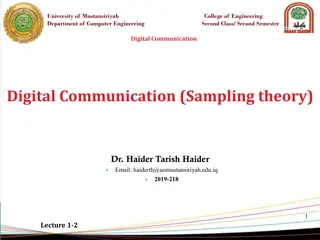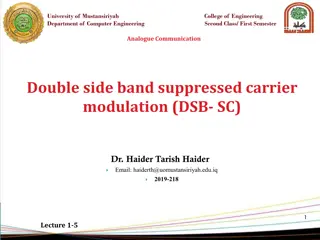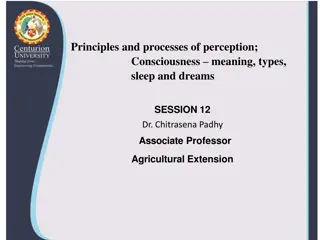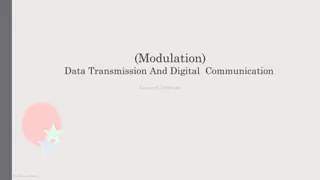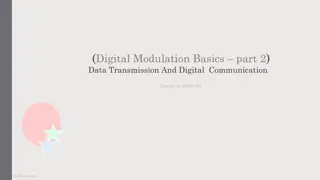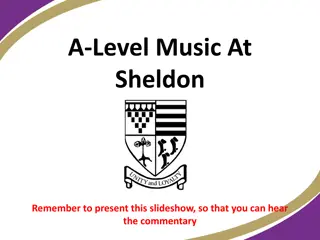Understanding Modulation and Tonal Hierarchies in Music Perception
This research explores how expertise influences the perception of modulation in Western and South Indian classical music, focusing on tonal hierarchies, pitch importance, modulation processes, and memory for melodies. Through experiments involving listeners rating probe tones against music excerpts, the study sheds light on cognitive representations of tonal scales and the speed of forming new representations. Key concepts include tonal centers, modulation between keys, and the cognitive processes involved in remembering melodies.
Download Presentation

Please find below an Image/Link to download the presentation.
The content on the website is provided AS IS for your information and personal use only. It may not be sold, licensed, or shared on other websites without obtaining consent from the author. Download presentation by click this link. If you encounter any issues during the download, it is possible that the publisher has removed the file from their server.
E N D
Presentation Transcript
Musical Expertise and Familiarity in the Perception of Modulation in Western and South Indian Classical Music W. Jay Dowling Music Perception and Cognition Laboratory (MPaC) The University of Texas at Dallas
Melody & Pitch The importance of tonal hierarchies Establish a set of 5-7 pitches (often out of 12 possible semitones) Establish a tonal center tonic pitch and a hierarchical pattern of importance of the other pitches Define a set of expectancies
Two Western Tonal Hierarchies Krumhansl & Kessler (1982) Key profiles Notice in-scale vs. out-of-scale pitches RATING RATING PROBE TONE PROBE TONE 3
Modulation Modulation from one key to another involves replacing the tonal profile with a new one. This can involve: Changing the set of pitches (eg, C major to C minor) Changing the tonal center (eg, C major to A minor) or both (eg, C major to A major) Modulation can take us to a closely related key that shares many pitches with the starting key (eg, C major to G major), or to a distant key that doesn t (eg, C major to B major)
TONAL MAP showing the relationships of the 24 possible keys 5
Memory for Melodies Melodies remembered as a contour pattern of relative pitches (with their rhythm) hung on a tonal scale (Dowling, 1978) When we hear a novel melody it takes the memory system measurable time (~ 10 sec) to attach the contour to the scale (Dowling & Tillmann, 2014) This operation requires a cognitive representation of the scale hence our interest in the speed with which a new representation is formed
Experiment Listeners hear first 2 min of a Haydn String Quartet in one ear, along with a probe tone (one of the 12 possible semitones) in the other ear They rate the probe tone continually for how well it goes with the music (Toiviainen & Krumhansl, 2003):
TASK 8
Method They go through the 2-min excerpt 12 times, each time with a different probe Blocks of 12 Ss with a common degree of musical training complete a Latin square, so that for each trial each of the 12 probes is represented 60 Ss (5 blocks) completed the task at each of 3 levels of training (None, 1-5 yr, > 5 yr) We use the ratings to put together tonal profiles that (we hope) will change as the listener progresses through the piece We correlate those profiles with the standard profiles for the possible keys that the listener will encounter
Method The pieces were the first 2 min of Haydn s Quartets op. 76, no. 2 ( Quinten ) and op. 76, no. 3 ( Emperor ) Each excerpt started at the beginning and stopped at the end of the exposition section (the first repeat sign) The excerpts contained 3 or 4 modulations: d minor, F major, f minor, F major C major, G major, g minor, Eb major, G major
76/2 Exp trials 1-3 d F f F
76/2 Exp trials 10-12 d F f F
76/2 Inexp trials 1-3 d F f F
76/2 Inexp trials 10-12 d F f F
76/3 Exp trials 1-3 C G g Eb G
76/3 Exp trials 10-12 C G g Eb G
76/3 Inexp trials 1-3 C G g Eb G
76/3 Inexp trials 10-12 C G g Eb G
Grahabdham (Raman & Dowling, 2016)
Conclusions The cues for the tonal hierarchy (the key) are present in the surface details of a melody duration and frequency of occurrence of pitches Knowledgeable listeners, even from another culture, can pick up on those cues, and track modulations Less knowledgeable listeners tend to a more global pattern of response, correctly tracking the principal keys of an excerpt, but not always tracking shifts of key Greater familiarity with a piece leads to more global patterns of response. This was seen in the contrast between Western and Indian music teachers with Indian excerpts, and with Western musicians as they became more familiar with an excerpt.
THANK YOU Alex Bichler Participants 25
THANK YOU Kieth Gryder Kevin Herndon Jaicey Johnson Chris Lo Parisa Najafigol Bhavana Penmetsa Rachna Raman Ashwin Ramesh Franco Sabatini Alan-Michael Sonuyi William Stanford Naveen Subramanian David Tram Sahiti Yarakala 26
